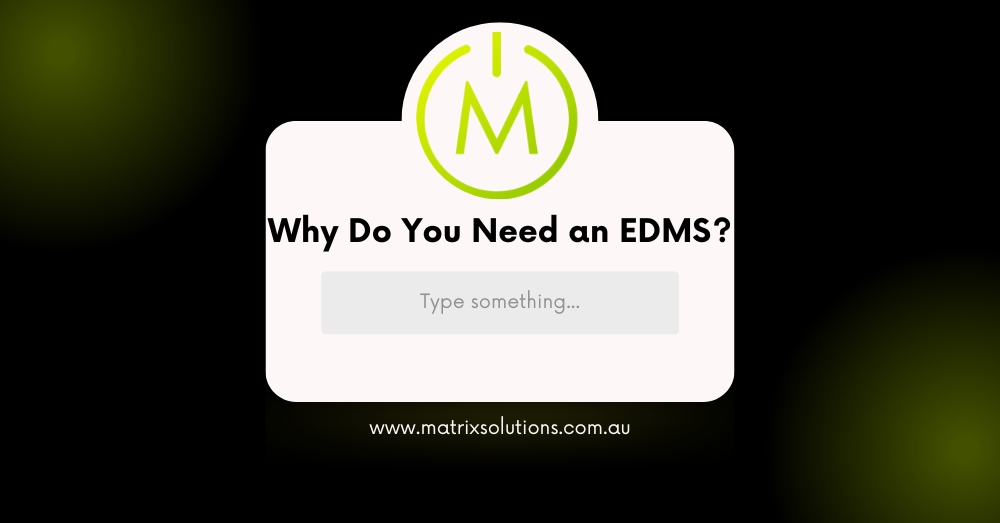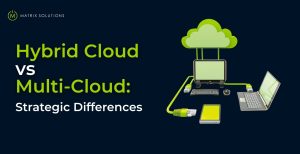An electronic document management system (EDMS) is a document management software solution that enables organisations to store, organise, manage, and retrieve their electronic documents and files securely and efficiently i.e, electronic records management. With the increasing digitalisation of business processes, EDMS has become essential for companies looking to streamline their document management practices and improve overall productivity.
These documents can include various file types, such as text documents, spreadsheets, presentations, images, etc. The primary goal of an EDMS is to provide a centralised repository for managing electronic files and facilitate easy access, collaboration, and version control.
Why Do You Need an Electronic Document Management System (EDMS)?

Implementing an Electronic Document Management System (EDMS) offers numerous benefits and addresses common challenges associated with traditional paper-based document management systems. Additionally, it also offers advanced features like version control and document retention policies, ensuring that important documents are securely stored, organized, and accessible when needed. Here are some key reasons why businesses need an EDMS:
Enhanced Document Security:
An EDMS provides robust security features, including access controls, user permissions, encryption, and audit trails. This ensures that sensitive information is protected from unauthorised access, loss, or damage.
Improved Document Organisation and Retrieval:
With an EDMS, documents can be indexed, tagged with metadata, and organised logically. This makes it easier to search, retrieve, and share documents, saving time and reducing manual effort.
Increased Collaboration and Workflow Efficiency:
EDMS enables seamless team collaboration by allowing multiple users to access and work on the same document simultaneously. It also facilitates automated workflows, approvals, and notifications, streamlining business processes.
Version Control and Audit Trail:
An EDMS maintains a complete history of document revisions, making it easy to track changes, compare versions, and revert to previous iterations if needed. This ensures data integrity and regulatory compliance.
Benefits of Using an Electronic Document Management System (EDMS)
Implementing an EDMS offers several advantages to organisations, regardless of their industry. Some key benefits include:
Cost and Space Savings:
Transitioning from a paper-based system to an EDMS eliminates the need for physical storage space, reduces printing and paper costs, and minimises administrative overheads associated with manual document management.
Improved Compliance and Regulatory Adherence:
An EDMS provides features like access controls, audit trails, and document versioning, which help organisations comply with industry-specific regulations and maintain data integrity.
Enhanced Productivity and Efficiency:
Quick and easy access to documents, automated workflows, and collaboration features boost overall productivity and efficiency, allowing employees to focus on core tasks and reduce time spent on manual document handling.
Disaster Recovery and Business Continuity:
EDMS ensures that documents are securely stored and backed up, protecting them from physical disasters or data loss. This enables quick recovery and ensures business continuity in case of emergencies.
Scalability and Integration:
EDMS solutions are scalable and can accommodate businesses’ growing document management needs. They can also integrate with other software systems, such as customer relationship management (CRM) or enterprise resource planning (ERP) systems, for seamless data exchange.
Types of Electronic Document Management Systems (EDMS)
There are different types of EDMS available, and organisations can choose the one that best suits their specific requirements. Some common types include:
On-Premises EDMS:
In an on-premises EDMS, the software is installed and maintained on the organisation’s local servers or infrastructure. This gives businesses full control over their document management system but requires upfront hardware and software investments.
Cloud-Based EDMS:
Cloud-based EDMS, also known as Software-as-a-Service (SaaS EDMS), is hosted and managed by a third-party provider in the cloud. This eliminates the need for on-site infrastructure and allows for scalability, remote access, and automatic software updates. Cloud-based EDMS is an increasingly popular choice due to its flexibility and cost-effectiveness.
Hybrid EDMS:
A hybrid EDMS combines the advantages of on-premises and cloud-based solutions. It enables organisations to store sensitive or regulated documents on local servers while utilising the cloud for less critical files or collaboration. This approach strikes a balance between control and accessibility.
Typical Features of an EDMS
While specific features may vary depending on the EDMS vendor and solution, here are some common features found in electronic document management systems:
Document Capture and Scanning:
The ability to digitise paper documents by scanning them and converting them into electronic format for storage and management.
Document Storage and Organization:
A centralised repository for storing and organising electronic documents, with options for folder structures, metadata tagging, and indexing.
Document Retrieval and Search:
Powerful search functionality to quickly locate specific documents based on keywords, metadata, or content within the document.
Version Control:
Tracking and managing document versions, allowing users to view, compare, and restore previous versions.
Document Collaboration and Workflow:
Tools for multiple users to collaborate on documents simultaneously, with features like document check-in/check-out, commenting, and task assignments.
Security and Access Control:
User authentication, role-based access controls, permissions management, and encryption to ensure document security and prevent unauthorised access.
Document Archiving and Retention:
Automated archiving and retention policies to ensure compliance with legal and regulatory requirements.
Integration with Other Systems:
The ability to integrate with other software systems such as email clients, CRM, ERP, or workflow management tools for seamless data exchange and process automation.
Factors To Consider When Choosing an EDMS
When selecting an EDMS for your organisation, consider the following factors:
Business Needs and Scalability:
Evaluate your specific document management requirements, such as the volume of documents, collaboration needs, and future growth.
Usability and User Interface:
Ensure that the EDMS has a user-friendly interface and intuitive navigation, as it will be used by employees across the organisation.
Security and Compliance:
Verify that the EDMS provides robust security features, including encryption, access controls, and compliance with industry-specific regulations like HIPAA or GDPR.
Integration Capabilities:
Determine if the EDMS can seamlessly integrate with existing software systems and applications, such as email clients or line-of-business applications, to streamline workflows and data exchange.
Vendor Reputation and Support:
Research the reputation and track record of the EDMS vendor. Check customer reviews, testimonials, and customer support options to ensure reliable service and support.
Cost and Return on Investment (ROI):
Consider the upfront costs, ongoing licensing or subscription fees, and potential ROI in terms of cost savings, productivity gains, and improved efficiency.
How Does an EDMS Work?
The functioning of an EDMS typically involves the following steps:
1. Document Capture:
Documents are captured in electronic format through scanning, direct digital creation, or importing from existing files.
2. Indexing and Metadata Tagging:
Documents are organised and indexed using metadata, such as document type, author, date, or keywords. This enables efficient search and retrieval.
3. Storage and Repository:
The documents are stored in a centralised repository, either on-premises or in the cloud, ensuring secure and accessible storage.
4. Document Retrieval:
Users can search for and retrieve documents using various search criteria, such as document name, keywords, or metadata.
5. Document Collaboration and Workflow:
Users can collaborate on documents by checking them out, making changes, adding comments, and notifying others for review or approval. Workflow features enable automated routing of documents for review and approval processes.
6. Version Control:
The EDMS tracks and manages document versions, allowing users to access previous versions, compare changes, and revert to earlier iterations if needed. This ensures data integrity and facilitates collaboration.
7. Security and Access Control:
The EDMS incorporates security measures such as user authentication, role-based access controls, encryption, and audit trails to monitor document activities and ensure compliance.
8. Archiving and Retention:
The EDMS may include features for automated archiving and retention of documents based on predefined policies. This ensures compliance with legal and regulatory requirements for document retention periods.
Which Industries Benefit from Having a Strong EDMS Implementation?
A strong EDMS implementation can benefit organisations across various industries, including:
Legal:
Law firms and legal departments deal with vast amounts of documents, including contracts, case files, and legal research materials. An EDMS streamlines legal document management, simplifies search and retrieval and facilitates collaboration among legal teams.
Financial Services:
Banks, insurance companies, and financial institutions rely on efficient document management for compliance, client onboarding, loan processing, and risk management. An EDMS improves accuracy, reduces processing time, and enhances document security.
Professional Services:
Professional firms, such as consulting, accounting, or architectural firms, deal with project documentation, client records, and intellectual property. An Electronic Document Management System enhances productivity, enables effective collaboration, and improves client service delivery.
Why Choose Matrix Solutions for Electronic Document Management Systems?
When it comes to choosing an EDMS provider in Australia, Matrix Solutions stands out for several reasons:
Expertise in Document Management:
Matrix Solutions specialises in providing tailored hosted desktop and network management solutions to professional firms
Customised Solutions:
Matrix Solutions understands that every organisation has unique requirements. We work closely with clients to assess their needs and provide customised EDMS solutions that align with their business processes and goals. Whether you need Managed IT support for law firms or the financial industry, we are here for you.
Comprehensive Support:
Matrix Solutions offers end-to-end support, from the initial implementation to ongoing maintenance and user training. Their dedicated support team ensures that clients receive prompt assistance and guidance throughout their EDMS journey.
Secure and Reliable Infrastructure:
Matrix Solutions provides a secure hosting environment for EDMS solutions, ensuring data protection, regular backups, and disaster recovery measures.
Integration Capabilities:
Matrix Solutions understands the importance of seamless integration with other business systems. We have expertise in integrating EDMS solutions with other software platforms, such as CRM or ERP systems, to streamline workflows and enable efficient data exchange.
Local Presence and Expertise:
Matrix Solutions is based in Australia, which means we have a strong understanding of the local business landscape and regulatory requirements.
Proven Track Record:
Matrix Solutions has a proven track record of successfully implementing EDMS solutions for professional firms across various industries. We have built a reputation for delivering high-quality solutions that meet clients’ specific needs.
Commitment to Client Success:
Matrix Solutions prioritises client success and satisfaction. We go above and beyond to ensure that clients achieve the desired outcomes from their EDMS implementation, providing ongoing support and guidance to maximise the benefits of the system.
Conclusion
In today’s digital age, an electronic document management system (EDMS) is essential for organisations looking to streamline their document management processes, improve collaboration, enhance security, and increase overall productivity. By implementing an EDMS, businesses can enjoy benefits such as cost savings, improved compliance, efficient workflow management, and seamless access to information.
When choosing an EDMS provider, Matrix Solutions in Australia offers tailored hosted desktop and network management solutions, specialising in the installation and support of NetDocuments and Worldox Document Management software. With their managed IT services expertise, customised solutions, comprehensive support, and commitment to client success, Matrix Solutions is a trusted partner for organisations seeking effective electronic document management solutions. Claim your free consultation now!
What Is an Electronic Document Management System (EDMS) FAQs
What Types of Documents Can Be Stored in an EDMS?
An EDMS can store various types of documents, including text documents, spreadsheets, presentations, images, audio files, video files, and more. It provides a centralised repository for managing and organising electronic files of different formats.
What Is an Example of an EDMS System?
Examples of popular EDMS systems include NetDocuments, Worldox Document Management, SharePoint, OpenText Documentum, and Alfresco. These systems offer robust features for document storage, retrieval, version control, and collaboration.
What Other Terms Are Used To Refer to an EDMS?
Other terms used interchangeably with EDMS include Electronic Document and Records Management System (EDRMS), Electronic Records Management (ERM), Document Management System (DMS), and Content Management System (CMS).
What Is EDMS Technology?
EDMS technology refers to the software and infrastructure that enables the storage, management, and retrieval of electronic documents. It encompasses features such as document capture, indexing, storage, search, version control, and security measures.
What Is the Difference Between an EDMS and a Content Management System (CMS)?
While there may be some overlap in functionality, EDMS is specifically tailored for managing electronic documents. At the same time, CMS is more versatile, addressing a broader range of content management needs, especially for web-based content.










